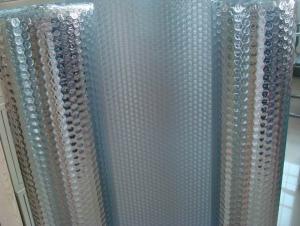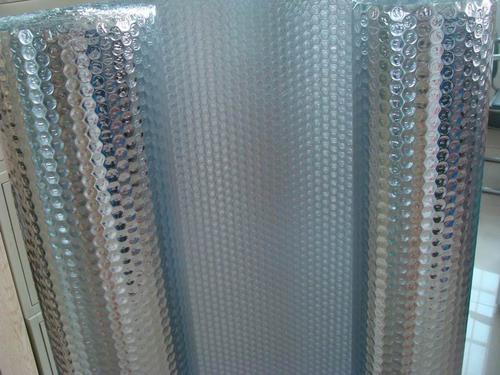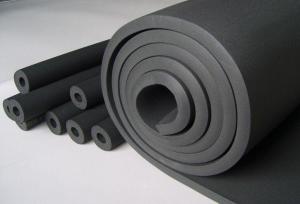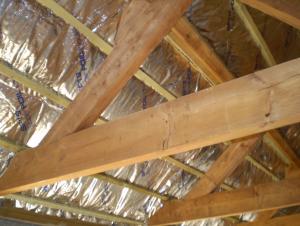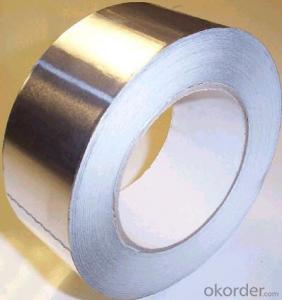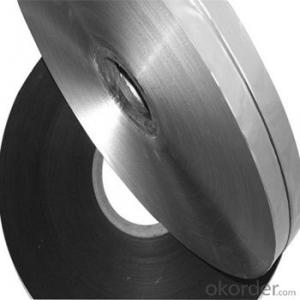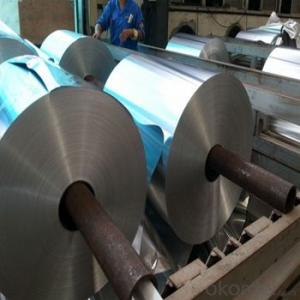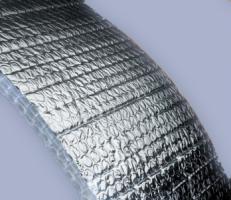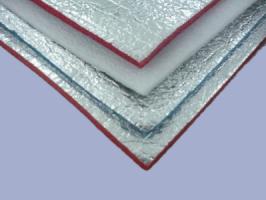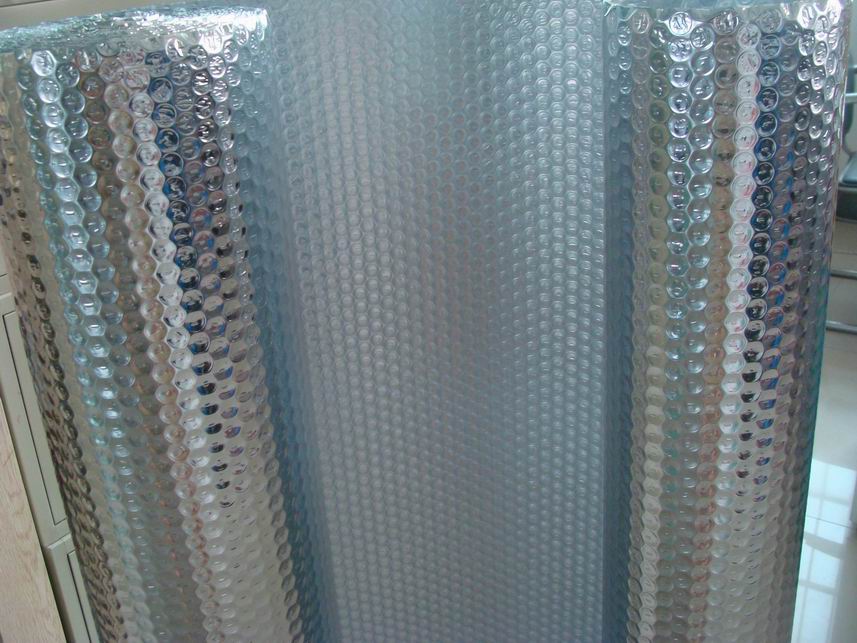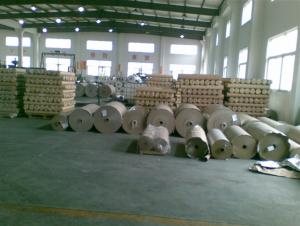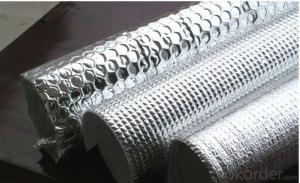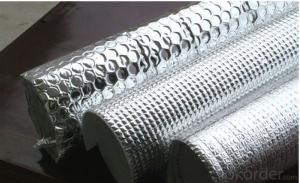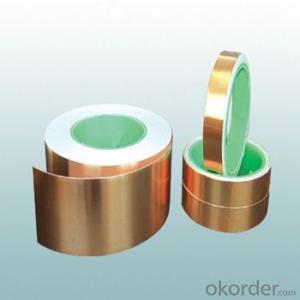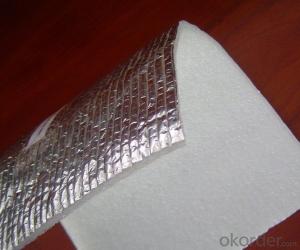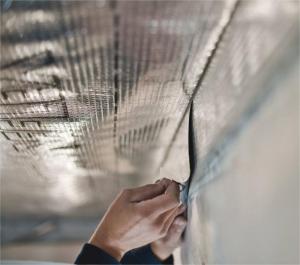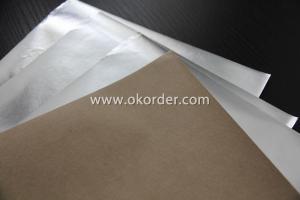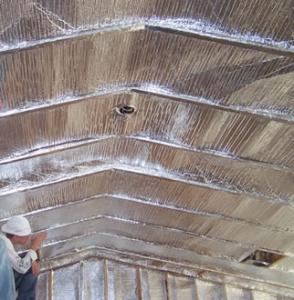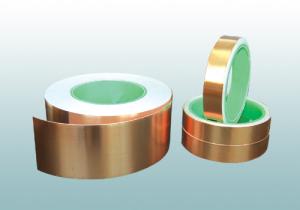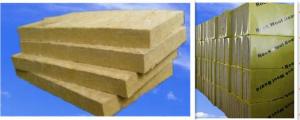Aluminum Foil Facing Bubble Foil Insulation
- Loading Port:
- China Main Port
- Payment Terms:
- TT OR LC
- Min Order Qty:
- -
- Supply Capability:
- -
OKorder Service Pledge
Quality Product, Order Online Tracking, Timely Delivery
OKorder Financial Service
Credit Rating, Credit Services, Credit Purchasing
You Might Also Like
Material Structure: AL/3 way scrim/ADHESIVE
| ||
Paper Weight:60gsm ( Standard, can be Customized) | ||
Roll Size:1.2m*50m ,1.25*50m (can be customized) | ||
PROPERTIES | TEST DATA | UNIT |
Thickness | +-0.15 | mm |
Weight | +-110 | gsm |
Emissivity | 0.03-0.04 | COEF |
Thermal conductivity | 0.037 | w/m0 |
Bursting Strength | 90 | N/25mm |
Reflectivity | 96-97 | % |
Water Vapour Transmission | 1.15 | Ng/N.S |
Corrosion | doesn't generate | |
Tensile Strength(MD) | 144.4 | N/25mm |
Tensile Strength(TD) | 46.3 | N/25mm |
- Q: Is it safe to use aluminum foil facing to wrap food for the purpose of freezing?
- <p>Yes, you can use aluminum foil facing to wrap food for freezing. Aluminum foil is a good conductor of heat and can help food freeze quickly, preserving its freshness. It also protects the food from freezer burn and helps maintain its moisture. However, ensure that the foil is food-grade and avoid using it in direct contact with acidic or high-sodium foods, as these can cause a reaction with the aluminum. For best results, wrap the food tightly and securely to prevent air exposure, which can lead to freezer burn.</p>
- Q: Is it possible to reuse the aluminum foil that was previously used on a surface?
- <p>Reusing aluminum foil facing can be tricky. If the foil is still in good condition without any tears or punctures, and it's clean, you might be able to reuse it for a similar application. However, it's important to note that the adhesive on the back of the foil can weaken over time and with use, which may affect its ability to stick properly. Additionally, if the foil has been exposed to high heat or has been used in a way that compromises its integrity, it's safer and more effective to replace it with new foil to ensure the best performance and avoid any potential hazards.</p>
- Q: Describe the most effective method for folding aluminum foil edges to seal food packaging.
- <p>The best way to fold aluminum foil facing for food packaging involves a few simple steps. Start by placing the food in the center of the foil. Bring two opposite edges of the foil together over the food, ensuring they overlap slightly. Fold one edge over the other, creating a seam. Press down firmly to seal. Repeat this process with the remaining two edges, ensuring all edges are sealed tightly. For added security, you can fold the edges inward to create a double seam. This method prevents leakage and keeps the food fresh and protected during cooking or storage.</p>
- Q: What are the safety regulations or guidelines that aluminum foil facing must adhere to?
- <p>Safety standards for aluminum foil facing are crucial to ensure the product's safety and effectiveness. These standards typically include requirements for material composition, thickness, and bonding strength to ensure the foil's durability and resistance to tearing. Additionally, there are guidelines for the foil's reflectivity and heat resistance, which are important for its performance in various applications. Compliance with these standards is often verified through testing and certification processes, ensuring that aluminum foil facing products meet the necessary quality and safety benchmarks before they reach the market.</p>
- Q: This question asks for guidance on preparing a nutritious meal using aluminum foil as a cooking method.
- <p>To make a healthy meal using aluminum foil, consider 'foil packet cooking'. Choose lean protein like chicken or fish, and pair it with a variety of colorful vegetables such as bell peppers, zucchini, and cherry tomatoes. Season with herbs, garlic, and a drizzle of olive oil. Fold the foil to create a sealed packet and bake in the oven at 400掳F (200掳C) for about 20-25 minutes or until the protein is cooked through and the vegetables are tender. This method retains nutrients and flavors while minimizing added fats.</p>
- Q: Is aluminum foil a healthier alternative to plastic wrap?
- <p>Aluminum foil may have some health benefits over plastic wrap due to its non-porous nature, which prevents the absorption of flavors and odors. It's also heat resistant, making it suitable for cooking and reheating food. However, aluminum foil doesn't cling to surfaces as well as plastic wrap, making it less convenient for sealing food. Additionally, there are concerns about aluminum exposure, though the risk is considered low when used in cooking. It's important to note that the health benefits of using aluminum foil over plastic wrap are not definitively established, and both have their pros and cons.</p>
- Q: What are the types of food that should not be cooked with aluminum foil facing?
- <p>There are certain types of food that should not be cooked with aluminum foil facing. Acidic foods, such as tomatoes and citrus fruits, can react with the aluminum and potentially release harmful compounds. Foods high in salt or spices can also cause a reaction with the aluminum, leading to the leaching of aluminum into the food. Additionally, cooking acidic foods at high temperatures can increase the risk of aluminum contamination. It's best to avoid wrapping these types of foods in aluminum foil when cooking, or to use the dull side of the foil facing away from the food.</p>
- Q: This question asks for the method to wrap a hot pan using aluminum foil, with specific instructions on how the foil should face.
- <p>To wrap a hot pan with aluminum foil, first ensure the pan is stable and on a heat-resistant surface. Take a large piece of aluminum foil, about twice the size of the pan. Hold one corner of the foil and drape it over the pan, allowing the shiny side to face the pan. Gently press the foil against the pan, working your way around the edges to cover the entire surface. Ensure the foil is snug but not too tight to avoid tearing. The shiny side facing the pan will help reflect heat and protect the pan's surface. Be cautious while handling the hot pan and aluminum foil to avoid burns.</p>
- Q: How to properly handle aluminum foil when it is exposed to hot or cold temperatures.
- <p>When handling aluminum foil that is hot or cold, it's best to use tongs, a fork, or a pair of gloves to avoid direct skin contact. This prevents burns from hot foil or frostbite from cold foil. If the foil is being used in cooking, ensure it's not in direct contact with the heat source for prolonged periods to prevent melting. For cold applications, like insulation, make sure the foil is dry to maintain its effectiveness as a barrier. Always handle with care to prevent tearing or puncturing the foil, which could compromise its integrity.</p>
- Q: Is it possible to repurpose old aluminum foil facing from various items for alternative uses?
- <p>Yes, you can reuse old aluminum foil facing for various purposes. It can be repurposed for crafts, such as creating reflective surfaces or adding texture to art projects. It can also be used in cooking as a makeshift roasting pan liner or to cover dishes to keep them warm. Additionally, aluminum foil facing can be used for insulation, wrapped around pipes to reduce heat loss, or even as a temporary solution for blocking light in greenhouses or windows. Always ensure the foil is clean and in good condition before reusing it for any purpose.</p>
Send your message to us
Aluminum Foil Facing Bubble Foil Insulation
- Loading Port:
- China Main Port
- Payment Terms:
- TT OR LC
- Min Order Qty:
- -
- Supply Capability:
- -
OKorder Service Pledge
Quality Product, Order Online Tracking, Timely Delivery
OKorder Financial Service
Credit Rating, Credit Services, Credit Purchasing
Similar products
Hot products
Hot Searches
Related keywords
